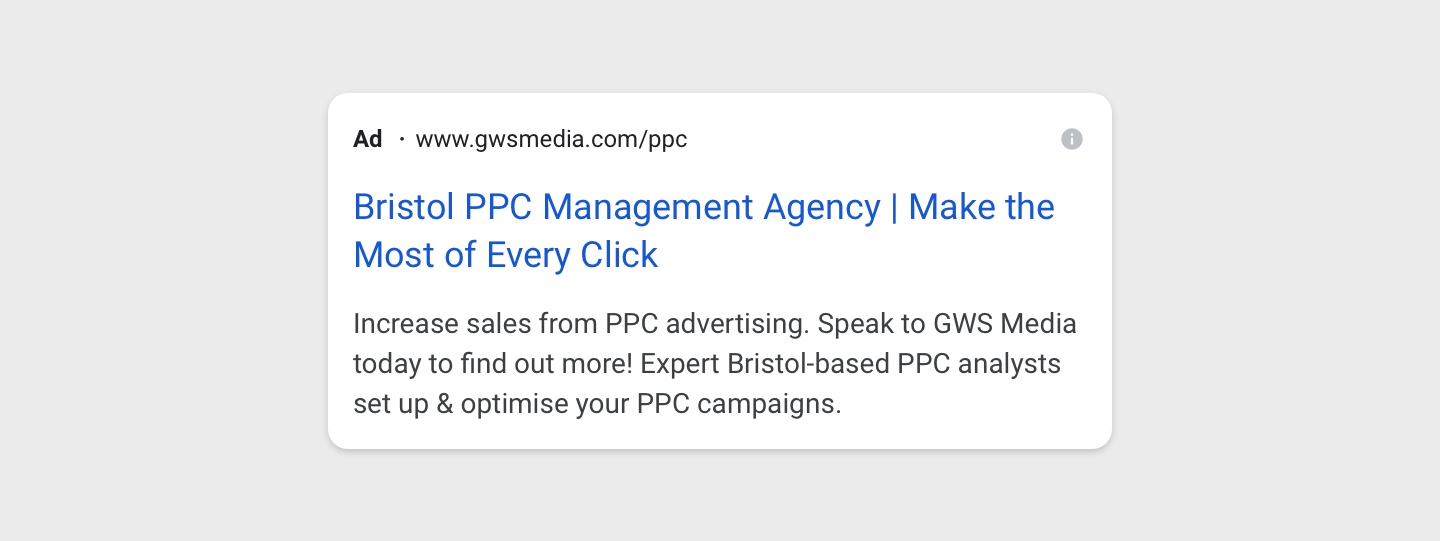Google Ads (formerly Google AdWords) is Google's own online advertising platform. Have you heard of it but haven't yet delved into using it?
Using the platform can be an effective use of advertising budget when used correctly. In this article we explain how to set up an Google Ads account, things to consider and methods of best practise in order to help gain positive results.
1. Establish your goals

To get more sales enquiries by email and form submissions instead of by phone
Do you want to increase your email enquiries and contact form submissions from your site? Do you want to prioritise these over phone calls because they interrupt you less and free up more of your time to run your own schedule? Consider the relative costs and value of incoming communications through these different media, and think about where you would expect to get the greatest benefits in terms of conversions for the time ad costs invested. Wherever that is, make it your priority.
Increased brand exposure
Your goal could be to increase the public’s exposure to your brand. Awareness of a brand is the first step in the potential customer building a relationship with a business. Think about things like what you want your business to be known for.
Targeting a specific location
Is your goal location-specific? Depending on the type of product or service you offer, targeting your market by its location may be beneficial in terms of efficiency of marketing spend, rates of conversion, and the costs of transportation associated with delivering your service or products to your customers.
To get more sales online
Do you want to increase your online sales in general? Are you looking to scale up your business, with the first step being to ensure that you can achieve the sales needed to do this?
2. Determine your audience

Once you have established the main goals of your campaign, it’s time to think about the audience for it. Determining and understanding an audience is vital in finding the right customers. Examples of questions to ask would be: where are your customers located, what are their typical demographic profiles in terms of age, income and lifestyle, when are they searching, and what device are they likely to be searching on? Building up a clear image of your audience will best enable you to tailor your campaign for positive results.
3. Carry out keyword research

It's important to target the right search engine keywords for a Google Ads campaign. Start by creating a list of phrases that a potential customer would be likely to search for. You can use the Google Ads Keyword Planner tool to help. There doesn’t need to be a limit at this point, but ensure that the keywords on your final list are relevant to your audience that you identified in the above point. Also ensure they are specific and relevant to your product or offering, and that you have considered and identified phrases that need to be excluded because they denote a different search intent even though they use some of the same words you are targeting.
4. Structure your account

Each Google Ads account allows you to structure it into multiple campaigns. These campaigns can be individually tailored to the various different goals you may have for your business or brand. Within each campaign, you can also create multiple ‘Ad Groups’. Each Ad group allows you to target its own selection of keywords and to write its own set of alternative ads.
5. Set your budget & bid levels

You can set a maximum daily budget for each campaign, and can also set specific maximum bid levels to limit the amount you bid for every specific keyword. If you do set both a daily budget and a bid limit on your keywords, Google will spread the visibility of your ad across the day so that the daily budget does not get consumed within just the first few hours.
6. Write appealing adverts

An appealing advertisement will attract clicks provided that you have set your bid levels high enough for it to be displayed at all. To help your chances, ensure that your advert is relevant to the keyword or phrase that triggered it. Without obvious relevance, your audience will be more likely to pass over your ad, and Google will also reduce the important ‘quality score’ component that goes into its algorithm for determining which ads to display for each keyword. Make yours attractive, clear and to the point. You also have the option to include ‘extensions’ to your ad. These are additional pieces of information that you can add to your ad covering location, phone numbers and what are known as ‘call-outs’. Offering these add-ons to your ads will help build trust for them, which may in turn lead to a higher click-through rate.
7. Design attractive landing page

Create relevant landing pages for your ads with your initial goal in mind. There is the option to create multiple landing pages for each campaign or ad group in order to include different information that increases the relevance of the landing page to the specific ad or group. Think about what you will and won’t include in these pages. Often landing pages can include lots of information and distractions for a user that can easily draw them away from the main call to action within them; and it is following through with this that should be your primary end goal for their behaviour. Try to avoid other links away from the page and see if you can reduce the amount of information to what is directly relevant to encouraging the specific action you want the user to take.
8. Enable conversion tracking
![]()
Be sure to enable conversion tracking so you can follow the user’s journey and have visibility on when they have completed a form submission or clicked on a specific link. This will give you a clearer picture of the journey the audience is taking and might potentially give you insight in to how you may be able to tweak certain parts of the journey so that your process is more successful.
9. Account maintenance & reporting

Remember that once you have set your campaign up and it is delivering enquiries or sales, the work does not end there. Regularly checking your campaign and its results will offer a clear picture of what may need to be changed in order to get better results. Do you need to add any further negative keywords if the ad is appearing for keywords that you do not want to target? Is there a certain time of day when your ads are performing consistently better so that it makes sense to limit Google’s display of your ad to a narrower time frame around then? Can you afford to increase your bids if your ad is not showing on the first page of the results? A successful campaign is one that is constantly adapting and improving based on what its manager has been learning.
10. Monitor R.O.I., identify opportunities

Monitor your results throughout. Are they what you expected for the investment you are putting in? Once a reasonable length of time has passed (at least a month), calculate your ongoing Return on Investment (R.O.I.) to ensure that the campaign is showing signs of being profitable and therefore economically viable. If you have been able to achieve a reasonable rate of enquiries through your Google ads, are these enquiries converting at a comparable rate to your pre-existing inbound organic traffic to your website? Tweaks and minor experimenting may be needed in order for you to successfully achieve the results you set out to.

